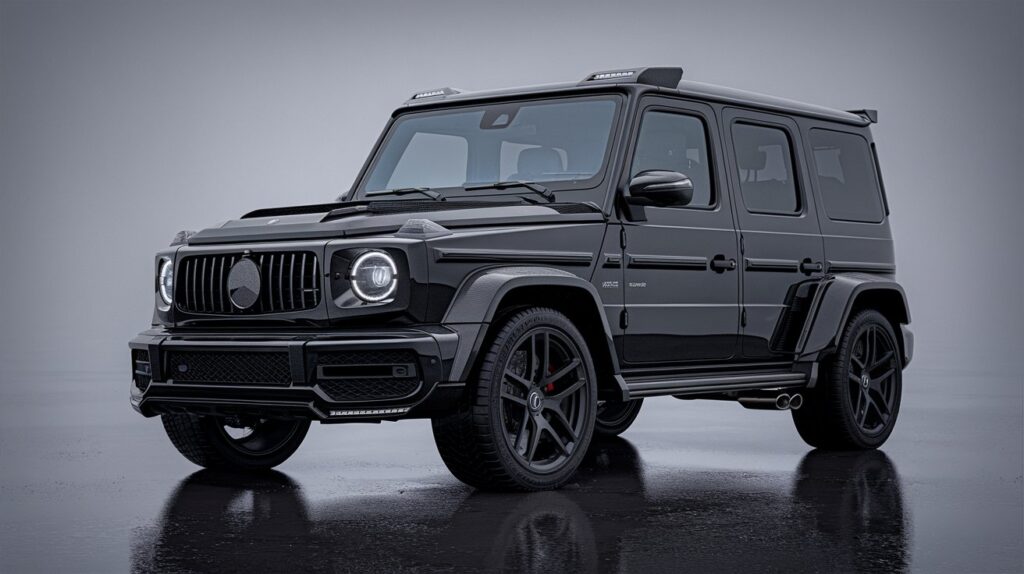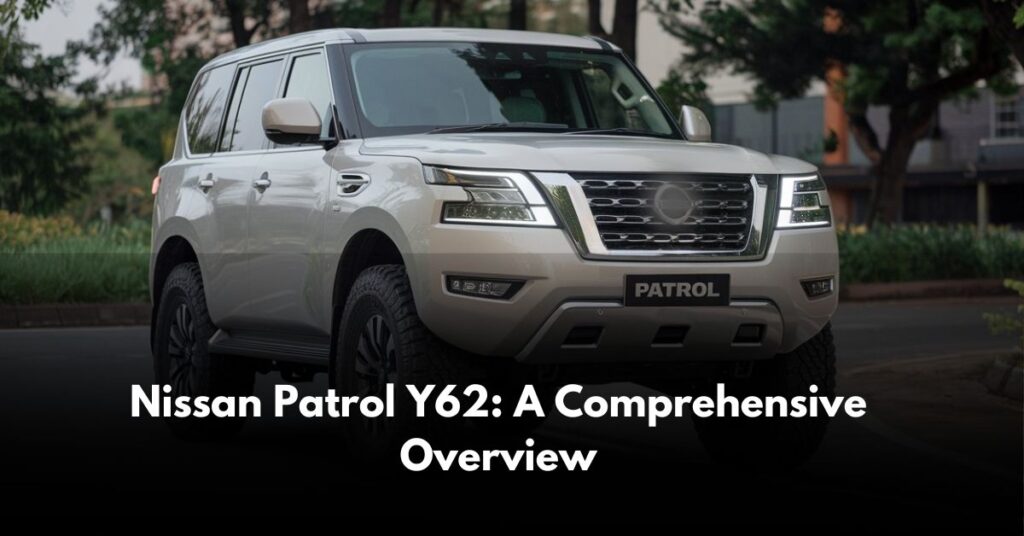Is the 2025 BYD Seal U the Electric SUV We’ve Been Waiting For?
BYD’s meteoric rise in the global electric vehicle market has been nothing short of remarkable. Once seen as a regional player, the Chinese manufacturer has emerged as a genuine disruptor, challenging established automakers like Tesla, Hyundai, and Ford with a compelling mix of advanced technology and aggressive pricing. The 2025 BYD Seal U is its latest attempt to dominate the midsize electric SUV category, and it’s not holding back.
Launched initially in Europe in late 2023, the Seal U returns in 2025 with market-specific enhancements designed to expand its global footprint. According to the official BYD Europe website, the 2025 model includes improvements in range, infotainment functionality, and driver assistance features. BYD has begun strategic rollouts across key regions like the UK, Germany, and Scandinavia, and it’s eyeing Australia and potential fleet-oriented introductions in North America.
But does the Seal U offer more than just affordability? Can it compete on quality, innovation, and driver satisfaction? Let’s take a closer look.
Powertrain & Performance: BYD’s Electric Foundations
Built on BYD’s e-Platform 3.0, the Seal U is available in both single-motor front-wheel drive (FWD) and dual-motor all-wheel drive (AWD) configurations. This architecture enables a streamlined integration of motor, battery, and control systems, boosting efficiency and driving dynamics.
The base model combines a 71.8 kWh lithium iron phosphate (LFP) battery with a 160 kW motor producing approximately 214 horsepower. The top-tier variant comes with an 87.0 kWh battery and a 230 kW motor (308 hp), paired with AWD for improved traction and acceleration.
In terms of speed, the FWD version completes 0–100 km/h in 9.3 seconds—sufficient for everyday use. Meanwhile, the AWD model is considerably quicker, hitting the same mark in just 5.9 seconds. With a top speed of 175 km/h, it remains suitable for European highways and global city commutes alike.
Torque is rated at 310 Nm for the FWD and 460 Nm for AWD, delivering smooth, linear acceleration with impressive grip in corners. While it won’t thrill sports car enthusiasts, the Seal U is balanced and composed, designed more for consistency and comfort than raw excitement.
Range and Charging: Real-World Usability
For EV shoppers, range and charging speed often determine whether a car fits into daily life. The Seal U meets expectations, offering the following WLTP-rated ranges:
- 71.8 kWh (FWD): up to 420 km
- 87.0 kWh (AWD): up to 500 km
In real-world driving—especially under mixed urban and highway conditions—you can expect around 350–450 km depending on factors like climate, terrain, and usage patterns. For most users, this is enough to cover multiple days of driving without needing to recharge.

Charging is reasonably fast. The Seal U supports DC fast charging up to 140 kW, enabling a 30% to 80% recharge in under 30 minutes. AC home charging is capped at 11 kW, allowing overnight top-ups. Although it doesn’t match Hyundai’s 800V architecture, it’s competitive for its segment.
Whether you’re a city commuter or a suburban family juggling errands and weekend trips, the Seal U’s charging and range figures reduce anxiety and offer day-to-day reliability.
Trim Levels and Key Features: Comfort Meets Tech
BYD keeps the trim structure straightforward for 2025, with two main options:
- Comfort (FWD): The base model includes a 12.8-inch rotating touchscreen, cloth upholstery, adaptive cruise control, 18-inch wheels, and a power liftgate.
- Design (AWD): Adds a larger 15.6-inch screen, panoramic glass roof, leatherette seating, 19-inch alloys, and premium audio.
Both variants are equipped with the latest generation of BYD’s DiLink infotainment system, supporting over-the-air updates, smartphone integration, voice commands, and multi-profile settings. Apple CarPlay and Android Auto are expected to be supported in global markets.
The highlight is the rotating center display—BYD’s signature feature. It flips seamlessly between portrait and landscape, making navigation, video playback, and interface customization more intuitive.
Interior Quality, Space & Infotainment Experience
The Seal U punches above its weight in terms of cabin refinement. BYD has prioritized premium touches, including soft-touch dash surfaces, LED ambient lighting, and ergonomic seat design. The design language feels clean and futuristic, aided by subtle use of brushed metallic accents and piano-black panels.

The cabin is impressively spacious. Rear legroom is generous, and the flat floor enhances comfort for middle passengers. The rear seats also fold in a 60/40 split to increase practicality.
Cargo capacity is a major advantage:
- 552 liters with seats up
- 1,440 liters with seats folded
These numbers beat several direct rivals in the segment, making the Seal U an excellent choice for families, rideshare drivers, or outdoor hobbyists who need flexible storage.
The infotainment interface is fast and user-friendly, combining navigation, climate control, and vehicle settings in one platform. Voice recognition is responsive, and the integrated driving assistance menus are well thought out.
Safety Features & Driver Assistance: Confidence Comes Standard
The Seal U includes an impressive suite of driver aids as standard equipment, thanks to BYD’s DiPilot system. Safety features include:
- Adaptive Cruise Control
- Lane Centering Assist
- Blind Spot Detection
- Rear Cross-Traffic Alert
- Emergency Braking with Pedestrian Detection
- Driver Attention Monitoring
- Rear Occupant Alert
Although Euro NCAP has not released crash test results for the Seal U as of mid-2025, the safety spec sheet closely mirrors vehicles that have received five-star ratings.
Night driving aids, front/rear parking sensors, and a 360-degree camera are available in the Design trim. These features not only improve daily usability but also cater to a growing demand among tech-conscious buyers.
Global Pricing Breakdown: Is the Seal U Worth It?
One of BYD’s greatest strengths is aggressive, value-focused pricing. For 2025, the BYD Seal U is priced as follows:
- Europe:
- Comfort: €42,000
- Design: €48,000
- UK:
- Comfort: £36,000
- Design: £40,500
- Australia: AUD $55,000–$62,000 (estimated)
- North America: Pricing unconfirmed; limited availability through pilot fleet programs only
This pricing significantly undercuts rivals such as the Tesla Model Y and Ford Mustang Mach-E, while offering comparable or superior features. For a more rugged alternative from the same manufacturer, see the 2025 BYD Sealion 6.
Pros and Cons: Real-World Insights
Pros: The BYD Seal U delivers strong real-world usability through spacious interior dimensions, intelligent features, and commendable EV range. Its pricing undercuts the competition without compromising on quality or performance. Infotainment and cabin design feel premium, and the rotating screen offers a unique advantage over many rivals.
Cons: Fast charging capability, while adequate, falls short of industry-leading standards. The FWD version lacks punch for performance enthusiasts. Limited brand awareness outside China and Europe may affect resale value in some regions. Additionally, BYD’s after-sales service network is still maturing in emerging markets.
Conclusion: Who Should Consider the 2025 BYD Seal U?
The BYD Seal U is an ideal choice for buyers who want a well-rounded electric SUV without overspending. It excels in real-world functionality: long range, comfortable ride, user-friendly tech, and smart packaging. While it may not yet enjoy the cachet of Tesla or Hyundai, it more than holds its own where it counts—daily use, comfort, and total cost of ownership.
For EV buyers focused on practicality and cutting-edge features at an accessible price point, the Seal U is not just competitive—it’s compelling. And if you’re shopping in a tighter budget range, you might also want to explore BYD’s urban-friendly Seagull, which is redefining expectations in the entry-level EV category.
FAQ: 2025 BYD Seal U
1. Is the BYD Seal U available in the United States?
No. As of 2025, BYD has not officially launched the Seal U for sale in the U.S. market. The company is currently focusing on commercial fleet vehicles, such as electric buses and trucks, in North America.
2. What is the real-world range of the Seal U?
Expect between 350 km and 450 km under mixed driving conditions. Factors such as driving style, ambient temperature, and terrain can influence actual mileage.
3. How fast can I charge the Seal U?
DC fast charging up to 140 kW is supported, allowing a 30% to 80% charge in about 28–30 minutes. Standard AC charging is available up to 11 kW for home use.
4. How does it compare to the Tesla Model Y?
While the Tesla Model Y boasts faster charging and better performance, the Seal U offers better pricing, comparable tech features, and arguably superior build quality for the money.
5. Is the BYD Seal U good for families?
Yes. It has a spacious rear bench, a flat floor, high cargo volume, and comes equipped with a comprehensive set of safety features that make it ideal for family use.
6. What’s the benefit of the rotating screen?
The 12.8- or 15.6-inch screen can be rotated based on your preference—portrait for navigation, landscape for media—providing greater flexibility and ease of use.
7. Are government incentives available for the Seal U?
Yes, in many European countries and Australia. These include rebates, tax reductions, and toll exemptions. Availability depends on local policy.
8. What warranty coverage does BYD offer?
In most markets, the Seal U comes with an 8-year battery warranty and a 6-year/150,000 km vehicle warranty, which is competitive within the EV segment.
9. Can the Seal U tow?
Yes. The AWD version is rated to tow up to 1,300 kg (braked), which is sufficient for small trailers and lightweight campers, but not heavy-duty towing.
10. How well does it perform in cold climates?
With its AWD configuration and standard safety systems, the Seal U handles winter conditions reasonably well. However, using winter tires is essential for optimal performance in snow and ice.

